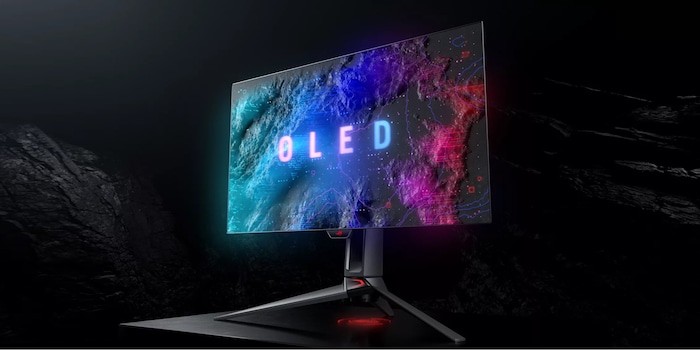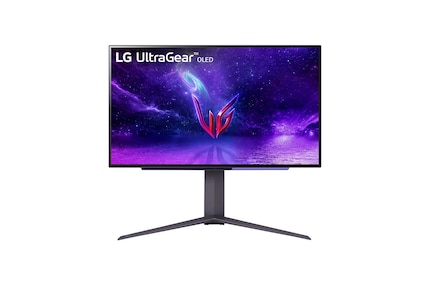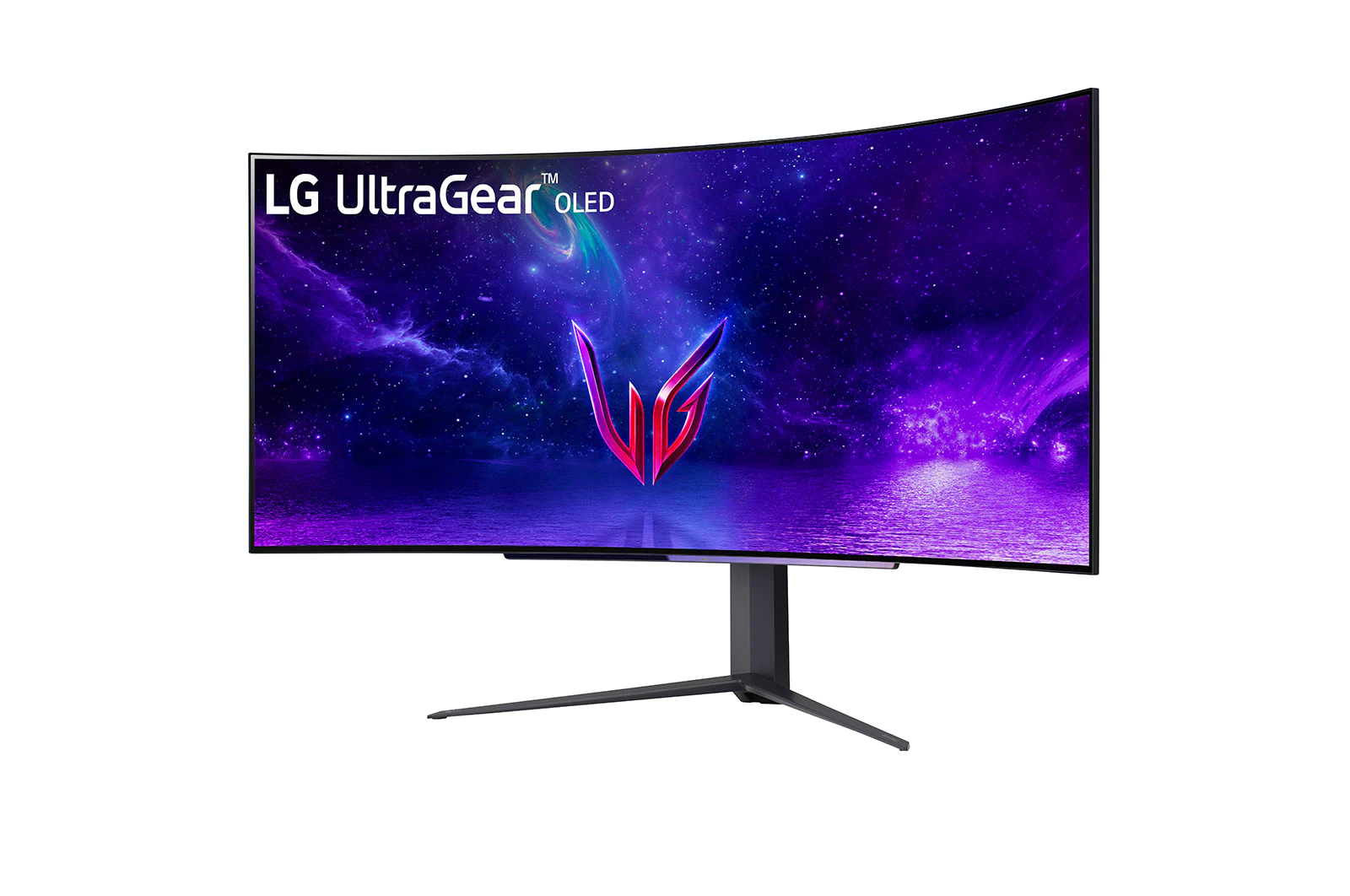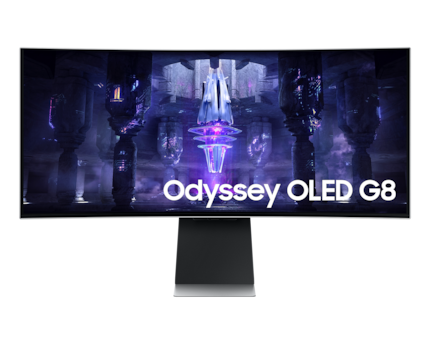
The OLED gaming monitors are rolling in
Various manufacturers will present new gaming screens with OLED displays at CES 2023. They are taking two different directions.
LG, Samsung, Acer and Asus have presented their new gaming monitors shortly before CES 2023. One trend in particular stands out: more and more of them come with OLED displays. The screens all look similar at first glance, but belong to two different camps: conventional OLED and QD OLED from Samsung. Both technologies have advantages and disadvantages.
OLED: brightness vs. burn-in
The ordinary OLED has been on the market for a long time, but is more commonly used in televisions. Screens with it are still few and far between, and there is a good reason for this: the area-wide brightness is significantly lower than with other displays. In addition, OLED is susceptible to burn-in effects with static content. This is not a big problem with TVs because the picture usually moves around in normal use. In addition, preventive measures such as pixel shift or automatic brightness limiters reduce the risk of ghosting.
If you use a display as a monitor, the OLEDs of previous generations lack the necessary luminosity for continuously bright picture content, depending on the workstation. In addition, static menu bars are the rule rather than the exception, which can lead to burn-in. Countermeasures such as dynamic brightness adjustments are annoying if you don't just want to play games on the screen (more on this soon in my review of the LG OLED Flex). To cope with the lack of luminosity, LG tries to squeeze a little more brightness out of the diodes in its new TVs. However, this leads to heat, which in turn favours burn-in. Therefore, the image-filling brightness of the monitors remains below 200 nits, even with the new models. That is not particularly bright; in daylight, 300 nits would be a good value.
The disadvantages are offset by the excellent picture quality of OLED displays. Because each pixel is individually illuminated, it can also be switched off individually. Then it is black - and really black. OLED monitors therefore have an extremely high contrast. The response times are also short, which is why the image remains sharp even during fast movements.
LG: UltraGear 27GR95QE and 45GR95QE
LG is showing two OLED monitors at CES. One flat in 27 inches and one curved in 45 inches. Both have 1440p vertical resolution, 240 Hz refresh rate and 0.03 ms (grey to grey) response time. They support Variable Refresh Rate (VRR) and have an Auto Low Latency Mode (ALLM). LG specifies the brightness at 200 nits, and 800 nits in a three-percent window. There is one DisplayPort 1.4 and two HDMI 2.1 ports.

Source: LG
The 27-incher has the classic 16:9 format. The resolution is 2560 × 1440 pixels, which means a pixel density of 111 ppi. For the 45-incher, it's a 21:9 format, 3440 × 1440 pixels and a pixel density of 84 ppi. The panel has a very high curvature of 800R.

Source: LG
The 27GR95QE costs $999 in the US, while the 45GR95QE is priced at $1699.
Acer: Predator X27U and X45
The exact same LG displays are in Acer's two new screens: the Predator X27U and the Predator X45. Interestingly, Acer specifies a different brightness than LG - 150 nits at full screen and 1000 nits peak. In addition, the Predators have a KVM switch built in, including a USB-C port with 90 watts of charging power. The LGs do not have that. On the other hand, Acer is stingy with the connections and only provides the screens with HDMI 2.0, which can only transmit 1440p at 144 Hz. If you want the full 240 Hz, you have to use DisplayPort 1.4.
.

Source: Acer*
The Predator X27U costs $1099, a hundred dollars more than the LG equivalent. The X45, on the other hand, is the same price at $1699.
Asus: ROG Swift PG27AQDM
Asus is only showing one OLED screen. The ROG Swift OLED PG27AQDM also uses a panel from LG and accordingly has similar specifications: 1440p, 240 Hz, 0.03 ms response time
.

Source: Asus
However, Asus stands out in two respects: the design is more eye-catching, with the ROG logo emblazoned in RGB on the back. The screen is also thicker than its LG and Acer brothers - because Asus has installed a heatsink and ventilation slots. This is supposed to counteract burn-in. The automatic brightness limiter may also have to intervene less because of the cooling. Otherwise, the monitor would at least be more durable.

Source: Asus
Asus has not yet named the price for the ROG Swift PG27AQDM.
QD-OLED: Better picture quality vs. colour fringing
Samsung is taking a different approach to LG. Last year, the manufacturer launched the first TVs with QD-OLED, and now screens with the same technology are following. How it works exactly is explained by colleague Luca Fontana in this article. Importantly for screens, QD-OLED is brighter and less prone to burn-in. Colours are also even better, especially yellow tones. Otherwise, the displays offer the same advantages as classic OLED: perfect black levels and fast response times.
So it's all sunshine and roses? No. Because of the triangular pixel arrangement, QD OLED monitors have a new problem: colour fringes in green and magenta appear at high-contrast edges. This is because computer operating systems cannot yet properly handle the new pixel pattern. Especially with text, the colour fringes can be disturbing. It is possible that future Windows and Mac versions will fix the problem, but it could be years before that happens. In the meantime, there are a few unsatisfactory workarounds:
In applications such as games, the colour fringing is hardly noticeable and the advantages of QD OLED seem to outweigh the disadvantages. The Dell Alienware AW3423DW with such a panel from Samsung has been on the market for a while. It is currently considered the non-plus-ultra of gaming monitors. I am therefore eager to see Samsung's own versions.
Samsung: Odyssey OLED G8 and G9
Both the Odyssey OLED G8 and the OLED G9 are screens with Quantum Dot technology - interestingly, Samsung doesn't even flaunt the name "QD-OLED" on its monitors, but just leaves it at "OLED".

Source: Samsung
The OLED G8 was unveiled some time ago, and is even available from stock. It has the same panel as the Alienware AW3423DW: 34 inches in 21:9 format, 3440 × 1440 pixels, 1800R curvature, 175 Hz refresh rate, 0.1 ms response time. Full-screen brightness is 250 nits, which is higher than classic OLEDs.

Source: Samsung
The OLED G9 adds some more surface area on the left and right. It is 49 inches with an aspect ratio of 32:9. The resolution is 5120 × 1440 pixels, the refresh rate even 240 Hz. Curvature, response time and brightness are identical to the G8. Samsung has yet to provide further details such as connections. If they are the same as on the G8, they would be a mini DisplayPort, a micro HDMI and a USB-C. The latter can connect devices up to a maximum speed of 1.5 Hz. The latter can charge connected devices with up to 65 watts.
The OLED G8 costs 1400 francs in our country at the moment, the price of the G9 is not yet known.
Titelbild: AsusMy fingerprint often changes so drastically that my MacBook doesn't recognise it anymore. The reason? If I'm not clinging to a monitor or camera, I'm probably clinging to a rockface by the tips of my fingers.